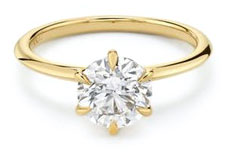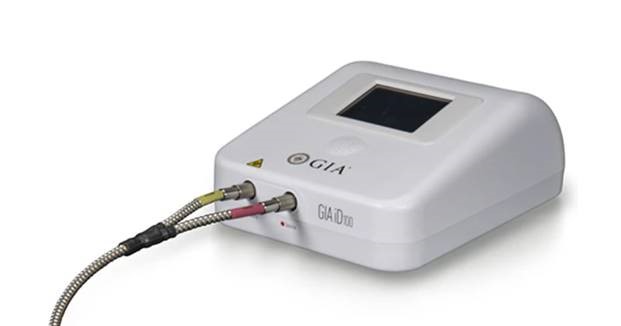Mined or Lab-made: Who knows?
There’s a big value difference between mined diamonds and lab-grown diamonds, but distinguishing between the two is NOT easy.
How does the customer know the difference? How does the seller know? the adjuster? the appraiser?
The customer
Suppose a customer doesn’t know about the price difference between mined and lab-grown. The retailer says the stone in the jewelry is “diamond” and the retailer’s document gives color, clarity and carat weight. The sale may not include a discussion of mined or lab-grown.
The retailer
The retailer gets information from the jewelry manufacturer. The manufacturer passes along information from the gem supplier. If the gem supplier says it is mined diamond, that’s what the retailer is told. Disclosure of lab-grown gems does not necessarily make its way down the sales chain—whether through carelessness or fraudulent intent.
The underwriter
Not being jewelry professionals, most underwriters accept whatever jewelry description is offered, and set premiums based on the jewelry’s appraisal valuation. Most appraisals do not specify whether a diamond is mined or lab-made.
The adjuster
For a total loss, the adjuster works with the documents at hand. Sometimes there is an indication that the stone was lab-made. For example, the docs may mention a brand known for its grown gems, such as Chatham. But in the absence of such info, the adjuster will probably just assume the lost stone was a mined diamond and price a replacement accordingly. If that assumption is wrong, the settlement will be excessive.
The appraiser
Gemologist appraisers are the go-to authorities for jewelry descriptions and valuations. They are expected to know about the 4 Cs of diamond. But diamond-growing technologies are advancing so quickly that even a highly qualified and experienced appraiser, such as a GG or FGA+, cannot spot a lab-made diamond using the usual gem lab equipment.
How big a problem is it?
Established companies, such as Lightbox or Vrai, proudly advertise their brands. Some companies even inscribe their name on the girdle of the stone.
But an increasing number of lab-grown stones entering the market come from unknown producers, not all of them reputable. Producers create diamonds of varying quality and may slip them into the market without disclosure, where they wind up being sold and priced as mined diamond.
Last year Mumbai hosted the first exhibit of lab-grown diamond jewelry. It attracted 70 exhibitors. Diamond-growing labs are located in many countries, and their wares are sold around the world, including in the U.S.
China plays a major role. After years of producing synthetic diamond for industrial use, it has the infrastructure that allows upgrading for size, quantity and quality. As reported by Yahoo News, and shown in the graphic at the top of this page, China already produces 56% of the world’s gem-quality lab-grown diamonds.
Industry analysts see lab-grown diamonds eating away at the natural diamond industry. Although some producers make diamonds of high quality, many in the industry fear that cheap low-quality goods will upend the fine jewelry market.
Pricing is a major factor. As lab-growing technology improves and becomes cheaper, prices of lab-grown gems are likely to go down. Faced with increased competition from grown gems, prices of mined diamonds will also be in flux.
One diamond-sector analyst recently commented that five years ago a lab-grown diamond cost about 10% less than a mined diamond, now it’s about 50%, and in another five years it could be 90%.
For insurers, that prediction points to how crucial it is to:
- identify the diamond as either mined or lab-grown
- keep valuations updated
Valuation at time of a future loss could be vastly different from when the diamond was initially insured. This is true for both mined and lab-grown diamonds.
So: mined or lab-made? What does it take to make that call?
Right now, it takes expensive technology.
GIA currently offers for sale the GIA iD 100, a device that can identify mined diamonds in a matter of seconds. Stones other than mined diamonds are flagged as requiring further examination by the appraiser.
The stones it flags include not only diamonds grown in a lab but also imitation diamond and simulants, such as CZ and moissanite. A competent gemologist appraiser, using common gem lab equipment, can easily distinguish lab-made diamonds from diamond simulants.
The GIA device is a useful one. However, it sells for about $5,000, which is beyond the reach of most gemologist appraisers.
Lab Report to the rescue
GIA is a reputable grading lab that has the technology to distinguish mined from lab-grown diamonds. GIA also has the means to continue to monitor the industry and keep up with advances in lab-growing technology.
GIA issues separate lab reports for mined and lab-made diamond, and we recommend that all higher-value diamond jewelry have a report from this respected lab. You can verify a GIA lab report at GIA Report Check
FOR AGENTS & UNDERWRITERS
A diamond of one carat or more should have a grading report from a reliable lab. The report should state whether the gem is mined (also called "natural") or lab-made, in addition to giving details on the 4 Cs and any gem treatments.
We recommend the following labs, and you can use this links to verify reports you receive.
GIA Report Check
AGS Report Verification
GCAL Certificate Search
Note that grading labs may offer several reports, with higher-priced reports giving more information. (See GIA's reports on lab-grown diamonds.) Be sure the report you get has all the necessary information.
All scheduled jewelry should have an appraisal from a reliable and trained gemologist appraiser who is independent of the seller. A lab report alone is not sufficient, since it describes only the gem, not the jewelry, and reliable lab reports do not give valuation.
The best appraisal includes the JISO 78/79 appraisal form and is written by a qualified gemologist (GG, FGA+, or equivalent), preferably one who has additional insurance appraisal training. One course offering such additional training is the Certified Insurance Appraiser™ (CIA) course of the Jewelry Insurance Appraisal Institute.
FOR ADJUSTERS
Mined diamond has a substantially higher valuation than lab-made diamond. If the appraisal or lab report does not explicitly state whether the gem is mined or lab-grown, use every means possible to determine which it is.
Gem-grading labs have received parcels with lab-grown diamonds mixed in with mined gems. How many lab-made stones have not been "caught" and are out in the marketplace being sold, and priced, as mined diamonds? The potential for fraud and overpayment on claims is enormous.
Sales receipts and proof-of-payment docs are often helpful in establishing whether a diamond is mined or lab-made.
Take note of brand names on the docs, as some names may indicate producers or retailers of lab-made stones.
On a damage claim, ALWAYS have the jewelry examined in a gem lab that has reasonable equipment for the job and is operated by a trained gemologist (GG, FGA+ or equivalent), preferably one who has additional insurance appraisal training, such as a Certified Insurance Appraiser™.
Some lab-grown diamonds are inscribed with the name of the manufacturer, though others are not. Inscriptions may also identify color-treated stones, such as the Pegasus diamond from Lazar Kaplan; they can identify a branded cut; or they may carry the lab report number. In short, inscriptions on the gem can supply important value information, and they are visible only under 10-power magnification.
Inscriptions on the gem's girdle can be removed. Deliberate non-disclosure is always possible.
©2000-2025, JCRS Inland Marine Solutions, Inc. All Rights Reserved. www.jcrs.com





